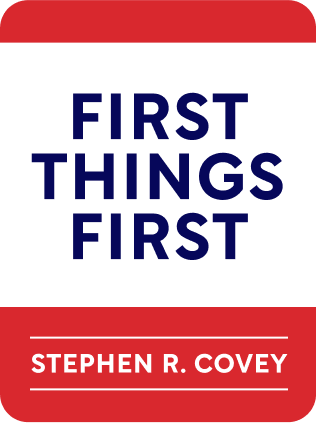

This article is an excerpt from the Shortform book guide to "First Things First" by Stephen R. Covey. Shortform has the world's best summaries and analyses of books you should be reading.
Like this article? Sign up for a free trial here .
What is the Stephen Covey time management matrix? How can it help you manage your time more effectively?
The Stephen Covey time management matrix is a framework for organizing your time and prioritizing tasks for optimum effectiveness (as opposed to efficiency). It emphasizes important tasks, which move you closer to your goals and values.
Keep reading to learn about Stephen Covey’s time management matrix.
What Is Stephen Covey’s Time Management Matrix?
There are two factors that determine how you spend your time: importance and urgency. A task can be either important, urgent, both, or neither.
One of the most common problems with time management is that we are often distracted by urgent tasks — things as trivial as a ringing phone or as critical as a health emergency. As a result, we don’t have enough time to spend on important tasks which move us closer to our goals and values. That is where Stephen Covey’s time management matrix comes in.
Stephen Covey’s Time Management Matrix: The Four Quadrants
Stephen Covey’s time management matrix emphasizes important tasks, which ultimately move you closer to your goals and values.
Imagine a square divided into four quadrants: One axis measures whether something is urgent or not, and the other axis measures whether it is important or not.
| Urgent | Not Urgent | |
| Important | Quadrant I Urgent and Important | Quadrant II Not Urgent, but Important |
| Not Important | Quadrant III Urgent but Not Important | Quadrant IV Neither Urgent nor Important |
Quadrant I
Quadrant I is both urgent and important. This quadrant contains emergencies and problems that require your immediate attention. This can include health emergencies, a work deadline, or a broken-down car.
You can’t ignore Quadrant-I needs because they are important, and life inevitably includes urgent matters, but you can prevent some things from becoming urgent if you attend to important tasks that include prevention and maintenance.
For example, if you’re driving down the highway and your car runs out of gas and stops, you’re in an urgent situation; you can’t get anywhere until you get some gas in the tank. But if you had filled up the tank sooner — when it was important but not yet urgent — you could’ve avoided this situation.
The same goes for other areas of life, including personal care. Exercise is important but not urgent. However, if you neglect doing it for too long, you can develop urgent health problems. Mental and emotional self-care, such as journaling and meditation, are also important but easy to put off; however, if you delay them too long, the buildup of stress and anxiety can lead to a mental breakdown, which is both important and urgent. Procrastination and neglect create more urgent tasks, and the more time you spend dealing with urgency, the more you’ll remain in a cycle of putting out fires because you don’t have time for maintenance and preventive measures.
Quadrant II
Quadrant II is important, but not urgent — the “Quadrant of Quality.” This is where you do prevention, maintenance, long-term planning, relationship building, and personal leadership activities like evaluating your paradigms. Quadrant II activities could easily be put off for their lack of urgency, but they’re critical for shrinking the time you spend in Quadrant I. These tasks greatly benefit your life in the long term and help you take greater control of how you spend your time.
There are six types of Quadrant II activities that can greatly improve your life but that many people tend to neglect.
- Strengthening relationships
- Planning, organizing, and preparing
- Practicing self-care
- Capitalizing on new opportunities
- Engaging in personal development activities
- Empowering yourself and others
Quadrant III
Quadrant III is urgent, but not important — the “Quadrant of Deception.” The urgency of Quadrant III activities can make them appear important, but they don’t actually align with your values or contribute to achieving your goals. Quadrant-III activities include making phone calls, going to meetings that lack purpose, and receiving unexpected guests.
Often these tasks are important to other people, and you may feel pressured into doing them to meet others’ priorities and expectations..
Quadrant IV
Quadrant IV is neither urgent nor important — the “Quadrant of Waste.” These activities add no value to your life; even recreational activities don’t belong here because true recreation is a restorative and valuable Quadrant-II activity. Quadrant IV includes gossiping, watching mindless television, or passively scrolling through social media.
You may use Quadrant IV out of confusion about what’s truly important or as a mental escape, although in reality, it makes no substantial improvement in your life or mental and emotional relief.

———End of Preview———
Like what you just read? Read the rest of the world's best book summary and analysis of Stephen R. Covey's "First Things First" at Shortform .
Here's what you'll find in our full First Things First summary :
- How to work effectively, not just efficiently
- Why you need to think more about what you're spending time on than how much time you're spending
- The 6 steps to effectively schedule and prioritize important activities







This is the Eisenhower Matrix. This Stephen R. Covey didn’t create it, so this is not his matrix.